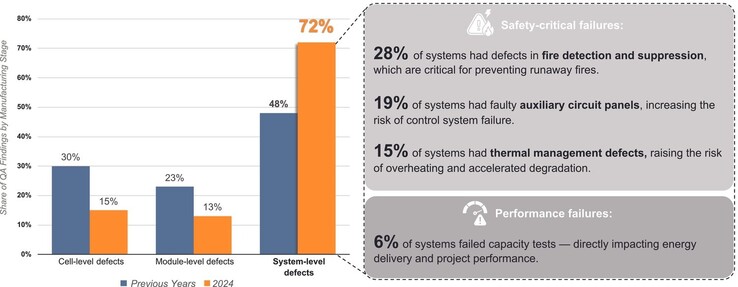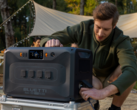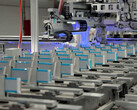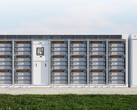As energy storage system (ESS) units grow in capacity to hit levels that can power a house for over five years, their battery safety record also improves.
Most ESS failures aren't due to battery defects now, but rather to issues with their auxiliary systems, according to a new study. In fact, the failure rate of battery cells and modules has dropped so dramatically that they only represent about 15% of all energy storage system defects now.
Random testing of over 65 GWh in energy storage projects by research firm Clean Energy Associates (CEA) has determined that their battery safety rating has increased twofold just last year alone. In 2023, battery cells were responsible for 30% of ESS failures, while auxiliary systems like fire suppressors, thermal management, or circuit panels accounted for 48% of all defects.
In 2024, the roles had reversed and 72% of manufacturing, installation, or operational failures originated from secondary ESS systems rather than the battery cells.
This reversal could be explained by the proliferation of inherently safer chemistries like sodium-ion or LFP batteries of the type that are in popular portable power stations like the Anker Solix C1000.
Alternatively, the introduction of new safety standards and certification tests has also contributed to the fact that energy storage system batteries are no longer the weak point when it comes to safety.
In 2026, for instance, the ESS industry in North America will be subjected to mandatory large-scale fire tests that replicate thermal runaway conditions. "Product certification, third-party quality assurance, and direct communication with communities are essential to build trust," notes the CEA.












